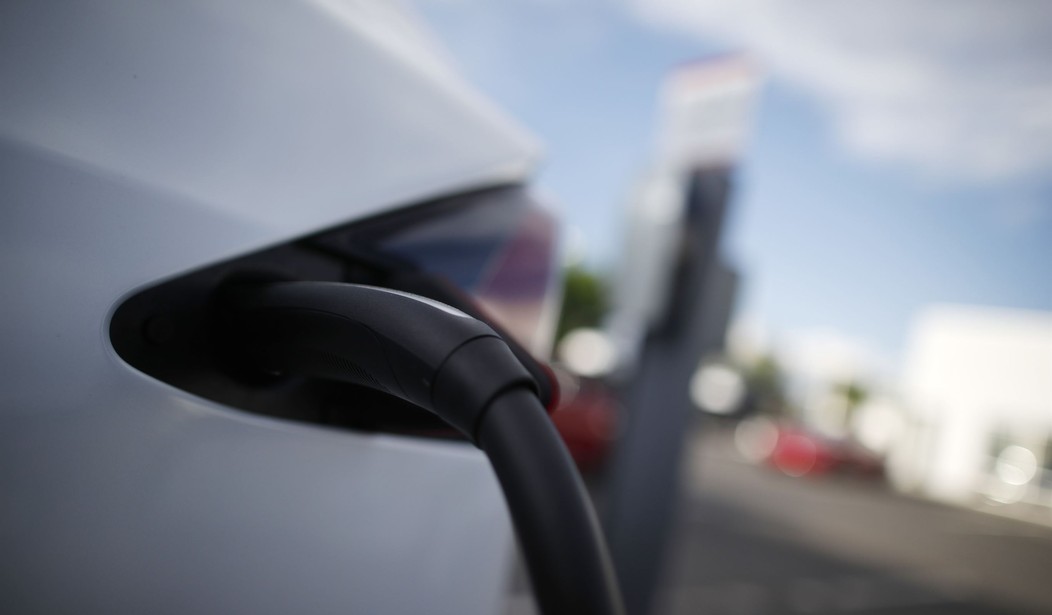Jazz has written about this topic a couple of times, including over the weekend. I think the question of whether the government should be pushing people into buying EVs is one on which Jazz and I probably agree. Generally, when the government gets involved in anything it’s a coin toss whether it will do more harm than good. That said, I do think there’s some pretty good evidence that EV adoption is growing apart from that and that it’s happening much more quickly than people realize.
For instance, Jazz cited this article from CNBC, “Nearly half of Americans say it’s unlikely they’ll buy an electric vehicle as their next car: Poll.” The emphasis in this story is on people reluctant to consider EVs but notice the headline has some qualifiers. Nearly half of Americans say it’s unlikely they’ll buy an EV as their next car. From the story:
The poll by the Energy Policy Institute at the University of Chicago and the Associated Press-NORC Center for Public Affairs Research found that 47% of U.S. adults say it’s not likely they would buy an EV as their next car. Only 19% of respondents say it’s “very” or “extremely” likely they would purchase an EV.
That link doesn’t seem to work any longer but I found the poll results here. And here are the results to the key question from which the entire CNBC story is derived. The complete question was ” The next time you purchase a vehicle, how likely are you to purchase a new or used electric vehicle?”

Notice that CNBC is playing a bit fast and loose with the numbers here. They report on those who are “extremely likely” or “very likely” to buy an EV and contrast that with those who are “not at all likely” or “not too likely.” But there’s a big group in the middle who describe themselves as “somewhat likely” to make it their next vehicle. So if you’re grouping these into likely vs. unlikely you’re really need to include those figures. So 41% were likely to make an EV their next car and 47% were unlikely to do so. It’s not an even split but it’s pretty close.
Last year, Consumer Reports published a national survey of 8,000 people which found, “71 percent expressing at least some degree of interest in buying or leasing EVs.” In the same poll, 14% of respondents said they would “definitely” buy or lease an EV. That was taken in early 2022. Just two years earlier in 2020, the response to the same question was at 4%. So the interest in definitely buying an EV has more than tripled in just two years and that’s prior to the adoption of EV tax credits.
The actual sales have also tripled between 2020 and 2022 according to new car registration figures. The adoption curve is happening.
EVs made up 5.6% of all new U.S. car registrations in 2022.
That’s up from 3.1% in 2021 and 1.8% in 2020, but still way behind China and Europe.
The sale of new EVs is not spread out evenly around the country. In California, EVs made up 16% of new car sales last year. Even California is still way behind Europe where adoption of EVs and plug-in hybrids is now about 20% of all new car sales (non-plug in hybrids are another 22%). In Norway, EVs already dominate the marketplace.
Last year, 80 percent of new-car sales in Norway were electric, putting the country at the vanguard of the shift to battery-powered mobility. It has also turned Norway into an observatory for figuring out what the electric vehicle revolution might mean for the environment, workers and life in general. The country will end the sales of internal combustion engine cars in 2025.
Norway’s experience suggests that electric vehicles bring benefits without the dire consequences predicted by some critics. There are problems, of course, including unreliable chargers and long waits during periods of high demand. Auto dealers and retailers have had to adapt. The switch has reordered the auto industry, making Tesla the best-selling brand and marginalizing established carmakers like Renault and Fiat.
But the air in Oslo, Norway’s capital, is measurably cleaner. The city is also quieter as noisier gasoline and diesel vehicles are scrapped. Oslo’s greenhouse gas emissions have fallen 30 percent since 2009, yet there has not been mass unemployment among gas station workers and the electrical grid has not collapsed.
What we’re seeing now is what’s known as an S-curve for the adoption of new technology. We’ve all been through this many times before. About 25 years ago (~1998) I bought a 32″ tube television to replace the 20″ TV I’d had for several years. At the time it was a fairly new model and relatively expensive. It was competing with even larger and more expensive projection TVs. (I always hesitated on those because they were heavy and sometimes had problems with color alignment if they were moved.)
A few years later, one of my neighbors bought a 42″ plasma TV. I still remember seeing it in his house and it seemed huge. Plus it was only about 5″ deep which seemed like the height of high technology at the time (I think this was in 2006 or thereabouts). He told us it had cost him $6,000 which at the time was the price of a halfway decent used car.
Jump forward 3-4 years and the price of a similar plasma TV came down to the point that I bought one. And then a couple years later I bought a 46″ LED TV which cost even less. It was around that time that we had a garage sale and I tried to sell my 32″ tube television. We had lots of traffic to look at our junk but no one wanted the TV, not even for $25. It was too big and too heavy to mess with.
You probably see where I’m going with this. There was certainly a time when lots of people would have been interested in that giant tube TV and very few would have been interested in a $6,000 plasma TV. But things change. Today there is not a single company left anywhere in the world making glass television tubes. There was an adoption curve and over a period of a decade everyone moved from tube and projection TVs to LED screens.
The same thing is going to happen with EVs. It will take longer because cars are a lot more expensive and difficult to manufacture than televisions. Still, sooner than most people think they’ll be considering an EV for their next car. In fact, I’d be willing to bet someone else at Hot Air (besides me) will be looking at buying one in the next 3-4 years. One of the big concerns most people have now is the availability of chargers when they go on a road trip. I’m planning my first EV road trip up to Monterey in August. I’ll let you know how it goes.
Finally, because I bought a used Model 3 I didn’t get a tax credit, but even without the tax credit most people need to think not in terms of just the up front cost of the car but the total cost of ownership over time. If you’re someone who gets a new car every 2-3 years this won’t matter, but I had my last car for 10 1/2 years. Even if you keep yours for half that long, the total cost of owning a Tesla Model 3 is already on par with owning a Toyota Corolla or with one of the cheapest cars in the US if you figure in the tax credit.








Join the conversation as a VIP Member